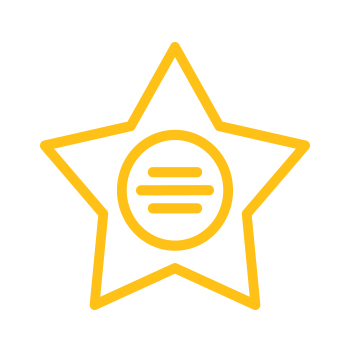Town halls. All employee meetings. Fireside chats. The name may differ but the premise is the same: bring employees together on a regular basis to inform them on key business updates, milestones and recent successes. It’s an integral and basic part of internal communications. But beyond that, why do these meetings really matter?
The truth is, these moments should be used for more than just giving mundane updates. They are valuable opportunities to personalize your leadership team (picture holiday costumes – more on that later), build a community, recognize employees and drive your company culture. Rather than thinking of it as “just another all employee meeting,” make it an experience that motivates and moves your people to act, and drives your business forward in a meaningful way.
At Daggerwing Group, we’ve helped clients revamp their company-wide meetings from something no one (and we mean no one) wanted to attend, to the most preferred and useful channel of communication. From working with companies in technology, product manufacturing, healthcare and more, here’s what we know to be true about creating an engaging and impactful all employee meeting:

1. BE REAL
Employees love when leaders show their personality and human-side. Get leaders to talk about their passions and what they do outside of work to make them relatable. For example, we convinced our clients to lose the suits and dress up in holiday costumes for their end-of-the-year all employee meeting. Best dressed went to the Chief of Sales Officer as the Grinch, with his real dog, Diego dressed as Max. Honorable mention was given to the Chief Legal Officer who came dressed as Buddy the Elf. Email us if you want photo evidence.
- If there’s a meeting-specific theme, get leaders to embrace it and be silly.
- Think about the tone of the event and reflect it in the name, branding and positioning.
- Make the event as personal as possible by sending invitations from the CEO, hearing directly from leaders in a Q&A and encouraging leaders to speak from notes instead of a teleprompter.

2. MAKE YOUR CONTENT MATTER
While it may all matter to you, it doesn’t always have the same impact on your people. Many employees have a hard time connecting how their work directly impacts the company. Employee experiences are great opportunities to connect people to your purpose and strategy.
- Make the event meaningful by bringing a customer’s voice in through a panel or informal discussion to motivate employees.
- Share consistent updates on company and leadership focus areas to show progress against priorities.
- Vary the content to keep peoples’ attention through videos, panels, fireside chats and Q&A.
- Ditch PowerPoint! We know it sounds crazy, but try using pictures as visual cues.
- Ask yourself: as an employee, would I be interested to hear or see this? If not, don’t do it!

3. REALIZE THE POWER OF A GLOBAL AND REMOTE WORKFORCE
Believe it or not, everyone wants to be included even if they’re not in the room. The in-the-room experience is important to get right of course, but that same attention and energy needs to be carried out globally.
- Include employees in all locations by making the event virtual.
- Help people to feel connected across regions and geographies by showing a social livestream of peoples’ reactions and pictures across offices.
- Encourage employees to submit questions for leaders, even if they aren’t in person.
- Build community through watch parties and celebration guides so people can view the event together and feel part of it. Start a friendly competition and see who can have the best party!

4. RECOGNIZE PEOPLE
Employee experiences are one of the biggest “stages” you have. Use that platform to recognize standout performance and behavior. During one of our client’s all employee meetings, we surprised an employee when he thought he was scheduled to talk to a customer. The “customer” was actually the CEO calling him to thank him for all of his hard work.
- Think about your overall recognition strategy and approach for these events – whether it’s through employee videos, personal accounts, stories that made an impact, or spontaneous call outs from leaders, it all counts.
- Recognition is not just top-down. Use these meetings as an opportunity for leaders to call out and recognize other leaders; for peer-to-peer recognition, which gets more involvement; and for employees to recognize their leadership team.